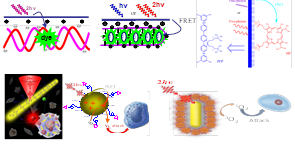讲座嘉宾:徐清华教授(新加坡国立大学)
讲座主持:霍延平 教授
讲座时间:2019年12月4日(周三)15:00-17:00
讲座地点:工四202
报告人简介:

XU Qing-Hua (徐清华) received his B.S. from Zhejiang University (1993), M.S. from Peking University (1996) and University of Chicago (1997), Ph.D. from UC Berkeley (2001), and conducted the postdoctoral research at Stanford University and UC Santa Barbara. He joined NUS Chemistry in 2005 and became a tenured associate Professor since 2011. His primary research interest is development of various light based applications such as sensing, imaging, photosensitization and optoelectronics using various low-dimension materials, as well as investigation of the underlying fundamental mechanisms using various novel optical spectroscopy and imaging techniques. So far he has published ~200 peer reviewed articles with citations of >10,000 times and H-index of 59.
Two-photon excitation techniques have unique advantages in biomedical applications compared to their one-photon counterparts, including 3-dimensional selectivity and deep penetration into biological tissues. However their applications are limited by the small two-photon absorption cross sections of conventional chromophores. Conjugated polymer have large two-photon absorption cross sections and can function as two-photon light-harvesting materials to significantly enhance two-photon optical properties of small molecules via two-photon excitation energy transfer. Our group is among the first few to propose and demonstrate the application of conjugated polymers as two-photon light harvesting complexes for various biomedical applications, such as bio-sensing, imaging and photodynamic therapy. By integrating conjugated polymer and photosensitizers into nanoparticles, two-photon induced singlet oxygen generation and cancer cell killing efficiency have been improved by ~1000-fold and can selectively target and attack cancer cells as well. Plasmonic nanoparticles resonance has been integrated into these conjugated polymer nanoparticles to further improve their performance.
